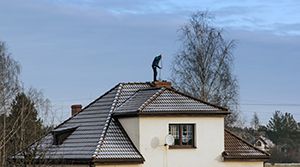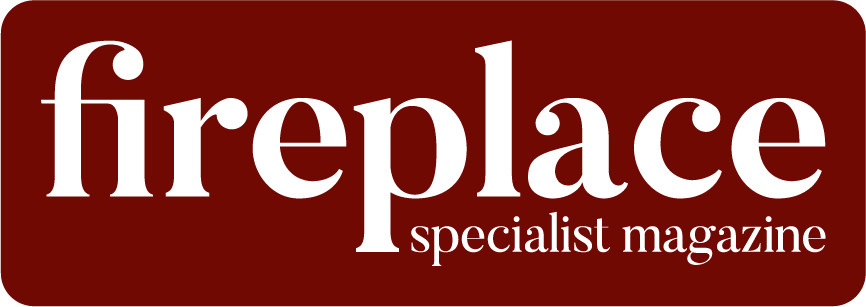Chimney sweeps in the UK have evolved from performing a manual craft rooted in 18th-century fire prevention into a highly technical profession supporting modern building safety, efficiency, and air-quality goals.
While the traditional image of a soot-covered sweep belongs to the past, the profession’s central role in mitigating chimney fires, reducing emissions, and ensuring compliance with legislation has never been more vital. With the resurgence of wood-burning stoves, biomass boilers, and heritage fireplaces, chimney sweeps are on the front line of fire safety and environmental performance.
Combustion By-Products and Safety Risks
UK fire statistics highlight that chimney fires remain one of the leading causes of domestic fires in rural areas, especially in homes with solid-fuel appliances.
Key risk factors include:

- Creosote and Soot Build-Up: A major ignition source. Chimney deposits can combust at temperatures as low as 200 °C.
- Carbon Monoxide (CO) Leakage: Caused by degraded flue liners, poor draft, or blocked terminals.
- Corrosion and Condensate Damage: Particularly in chimneys serving oil and gas appliances.
- Negative Draft Pressure: A growing issue in modern airtight homes where mechanical ventilation can reverse airflow.
To mitigate these risks, UK sweeps typically recommend:
- Annual sweeping for wood-burning or multi-fuel stoves (more frequent for heavy use or wet wood burning).
- Biannual inspections for commercial systems or high-output appliances.
- Prompt remedial work to repair liners, replace terminals, and improve draft stability.
Regulatory and Compliance Framework
UK chimney sweeps operate within a clearly defined regulatory landscape:
- BS EN 15287-1/2: Covers design, installation, and commissioning of chimneys and flue systems.
- BS 6461: Provides guidance for masonry chimney maintenance.
- Approved Document J of the Building Regulations (England & Wales): Sets requirements for combustion appliance safety and ventilation.
- DEFRA’s Clean Air Strategy (2019): Places stricter controls on emissions from domestic solid-fuel burning.
- HETAS Certification: Governs installation of solid-fuel appliances and associated chimney works.
Professional certification is typically obtained through:
- Guild of Master Chimney Sweeps (GMCS)
- National Association of Chimney Sweeps (NACS)
- APICS (Association of Professional Independent Chimney Sweeps)
These bodies set training requirements, ensure adherence to British Standards, and mandate use of appropriate tools and reporting procedures.
Technology in Modern UK Practice
Technological integration underpins the modern sweep’s workflow:
- Rotary Power Sweeping Systems: Offering consistent, controlled cleaning for lined and twin-wall flues.
- CCTV and Endoscopic Cameras: For detailed inspection of flue interiors and identification of breaches or deposits.
- Drones: Increasingly common for external inspection of chimney stacks in tall or heritage-listed buildings.
- Flue Gas Analysers: Used to verify appliance efficiency and identify incomplete combustion issues.
- Negative Pressure Testing Devices: Helping diagnose ventilation and draft problems in airtight homes.
Detailed inspection reports—often digital and HETAS-compliant—are provided to property owners and insurers as proof of compliance and maintenance.
Environmental and Efficiency Goals
In line with the UK Clean Air Strategy, sweeps play an expanding role in advising customers on best-burning practices and fuel selection.
Recommendations include:
- Using ‘Ready to Burn’-certified wood with moisture content below 20%.
- Regular sweeping to maintain appliance efficiency—studies by UK trade bodies suggest up to 15% improvement in heat output.
- Ensuring appliances meet Ecodesign 2022 standards to reduce PM2.5 emissions.
Many sweeps also offer consultation on retrofitting chimneys to accommodate high-efficiency appliances while maintaining compliance with building and conservation regulations.
Training and Continuous Development
UK sweeps must stay current with:
- Revisions to Building Regulations and British Standards
- HETAS updates on appliance installation and flue compatibility
- Advances in smart sensors for draft and emission monitoring
- Methods for servicing appliances in listed and heritage properties
Continuing professional development (CPD), provided by NACS, GMCS, and HETAS, is increasingly expected of practitioners as appliances and environmental requirements grow more sophisticated.
A Profession at the Crossroads of Safety and Sustainability
As UK homes continue to adopt renewable biomass heating alongside traditional solid-fuel stoves, the chimney sweep’s role remains pivotal in balancing heritage conservation, fire safety, and air-quality improvement.
By applying British Standards, using advanced diagnostics, and advising on efficient, low-emission practices, modern UK sweeps are not merely tradespeople but technical stewards of both safety and sustainability.
